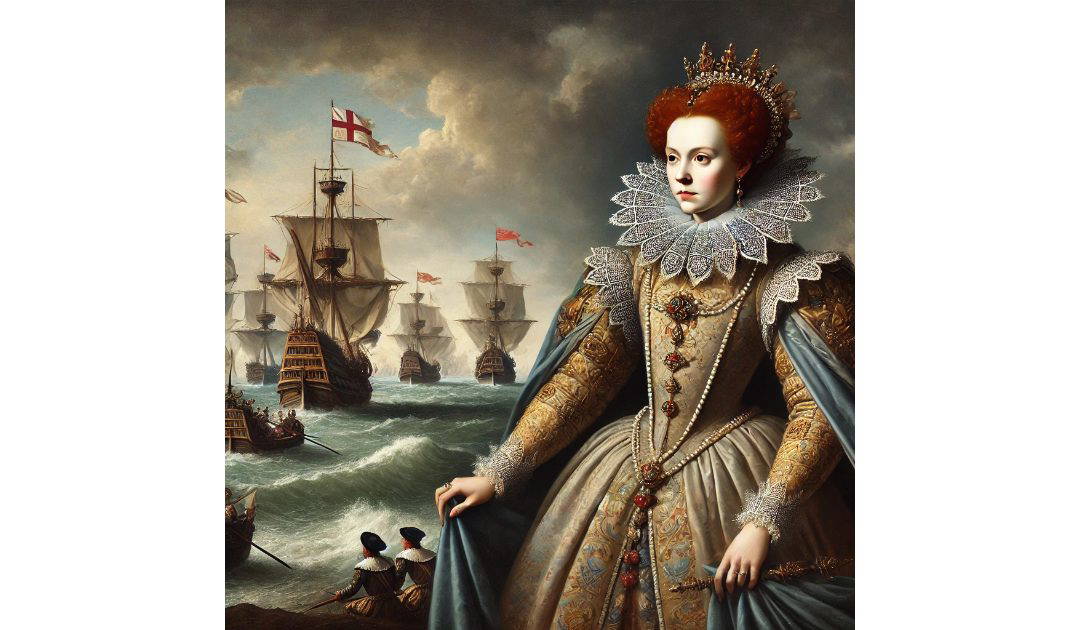On the 17th of November 1558 Elizabeth became England’s queen, aged 25, following the death of her half-sister Queen Mary I. My 10th great-grandfather Edmund Standen would have been nine at the time, and his elder brother Anthony just a few years older.
Elizabeth came to the throne amid political and religious turmoil. As the daughter of Henry VIII and Anne Boleyn, she inherited a kingdom deeply divided between Catholics and Protestants. To stabilize the religious conflict, Elizabeth established the Elizabethan Religious Settlement, which created a moderate form of Protestantism as the national religion, while maintaining some traditional Catholic practices. This religious compromise helped reduce tensions and was a foundation of her long reign.
Elizabeth’s leadership fostered a period of relative peace and prosperity. She skillfully managed her advisors and the nobility, balancing their power to maintain her own authority. Known as the “Virgin Queen” because she never married, Elizabeth used her single status as a diplomatic advantage, often entertaining marriage proposals from foreign princes to maintain alliances. This allowed her to maintain independence from foreign influence, crucial for the sovereignty of her rule.
One of the defining moments of Elizabeth’s reign was the defeat of the Spanish Armada in 1588. Spain, then the most powerful country in Europe, launched a massive naval invasion against England. Elizabeth’s navy, led by skilled commanders like Sir Francis Drake, managed to repel the Spanish forces, bolstering English national pride and weakening Spain’s dominance in Europe.
The Elizabethan era is also renowned for its cultural flowering. Elizabeth was a great patron of the arts, particularly theater, which saw the emergence of playwrights like William Shakespeare and Christopher Marlowe. English literature, music, and poetry flourished during her reign, as did exploration, with adventurers like Sir Walter Raleigh and Sir Francis Drake expanding English influence overseas, especially in the Americas.
Of course it wasn’t the skilled naval commanders like Drake who defeated the Spanish Armada, Elizabeth’s spymaster Francis Walsingham needed intelligence on the Spanish strength and plans. Fortunately he had recruited my ancestor Sir Anthony Standen who provided all the intelligence he needed. I have told his story in The Spy who Sank the Armada, the first book in the Sir Anthony Standen Adventures.
Elizabeth I’s reign ended with her death in 1603, concluding the Tudor dynasty. Her rule left a legacy of religious compromise, a strengthened monarchy, and a cultural renaissance that laid the groundwork for England’s future as a global power. Her skillful diplomacy, defiance against foreign threats, and support for the arts made her one of the most admired monarchs in English history, and her era remains a symbol of progress and achievement.

